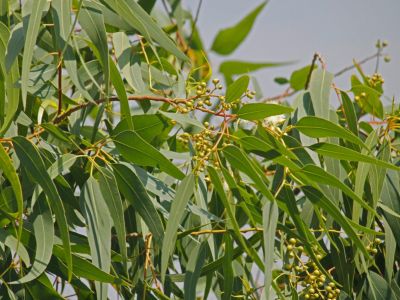How To Grow And Care For A Nasturtium Plant
Nasturtiums, also known as Tropaeolum majus, are stunning and easy-to-grow flowers that are perfect for beginner gardeners. They are annual plants that are native to South America, and they have been a popular choice for gardens around the world for centuries. They don't require much attention, and their colorful blooms will brighten up your garden year after year.

Plant Attributes
The leaves of the nasturtium plant are large and round, with a bright green color that stands out in any garden. The flowers are just as colorful, with shades ranging from pale yellow to vibrant orange and red. They also come in a variety of sizes, from small single blooms to large double-petaled flowers.
In addition to their beauty, nasturtiums also have several practical uses. The entire plant is edible, from the flowers to the leaves and even the seeds. The flowers have a slightly peppery taste and are often added to salads or used as a garnish. The leaves are also edible and can be used in salads, sandwiches, or as a cooked green. The seeds have a unique flavor and are sometimes pickled and used as a substitute for capers.
Nasturtiums are also great for pest control in the garden. They attract aphids away from other plants, and their leaves and flowers repel other pests such as whiteflies and squash bugs.
Plant Care
Nasturtiums are very easy to care for and can tolerate a wide range of growing conditions. They prefer full sun to partial shade and do best in well-draining soil with moderate moisture. They are also somewhat drought-tolerant, making them a great choice for hot, dry climates.
When it comes to fertilization, it's best to use a balanced, slow-release fertilizer at the time of planting. Avoid over-fertilizing, as this can cause the plant to produce more foliage than flowers.
One of the best things about nasturtiums is that they are virtually pest-free. However, they can be susceptible to powdery mildew in humid conditions. To prevent this, make sure to water the plant at the base rather than from overhead.
Pruning
Nasturtiums do not require much pruning, but it's a good idea to remove any dead or yellowing leaves to prevent disease. You can also remove spent flowers to encourage the plant to produce more blooms.
Propagation
The easiest way to propagate nasturtiums is by collecting the seeds from the plant. Allow the flowers to wilt and die back, then collect the seed pods and allow them to dry out completely. Once the pods are dry, gently open them and remove the seeds. Store the seeds in a cool, dry place until planting time.
You can also propagate nasturtiums by taking cuttings from the plant. Cut a stem several inches long just below a node, remove the leaves from the bottom of the stem, and plant the cutting in moist potting soil. Cover the pot with a plastic bag to maintain humidity and keep the cutting out of direct sunlight until new growth appears.
Potting & Repotting
If you'd like to grow nasturtiums in containers, make sure to use a well-draining soil mix and ensure that the container has drainage holes. Nasturtiums do not like to be overwatered, so make sure to allow the soil to dry out slightly between waterings.
If your nasturtiums outgrow their container, you can easily repot them into a larger pot or transplant them into your garden. Simply gently loosen the root ball, transplant it into a new container or garden bed, and water well.
Common Pests & Plant Disease
Nasturtiums are generally pest-free, but they can be susceptible to powdery mildew in humid conditions. To prevent this, make sure to water the plant at the base rather than from overhead. Additionally, aphids may be attracted to the plant but can easily be controlled with insecticidal soap or a strong blast of water.
Common Problems
The most common problem that gardeners face with nasturtiums is poor flowering. This can be caused by several factors, including over-fertilization, too much shade, or too much water. To encourage your plant to bloom, make sure to provide it with adequate sunlight, a balanced fertilizer at planting time, and water regularly but not excessively.
Another problem that can occur with nasturtiums is leaf yellowing. This is often caused by overwatering, poor drainage, or soil that is too acidic. Make sure to allow the soil to dry out slightly between waterings, use a well-draining soil mix, and adjust the soil pH if necessary.
In conclusion, nasturtiums are a beautiful and easy-to-grow plant that is perfect for beginner gardeners. With their bright colors, edible leaves and flowers, and natural pest control properties, they are a great addition to any garden. As long as you provide them with adequate sunlight, well-draining soil, and regular watering, they will thrive and brighten up your garden year after year.


:max_bytes(150000):strip_icc()/how-plant-clover-lawn-4858751-05-ad4b662a688e47f0a0288c0bfc7ac9b5.jpg)

Post a Comment for "How To Grow And Care For A Nasturtium Plant"